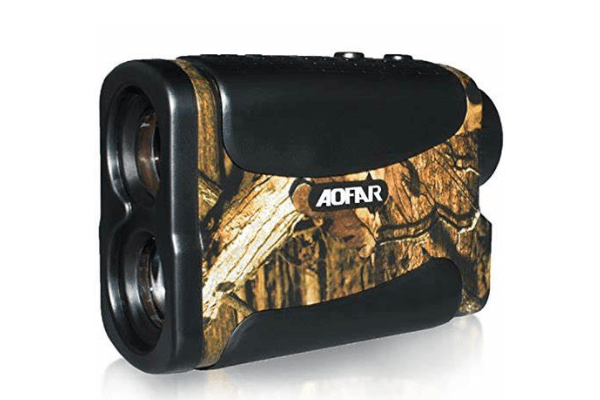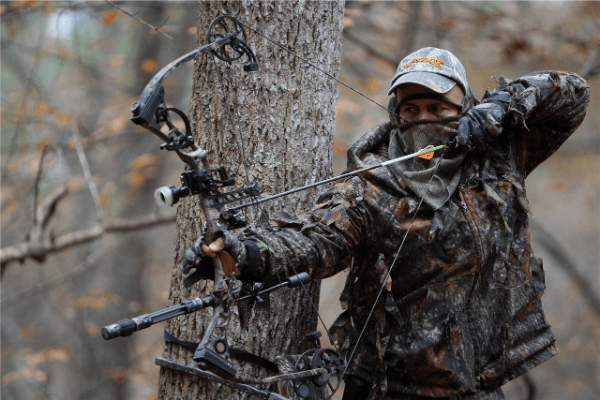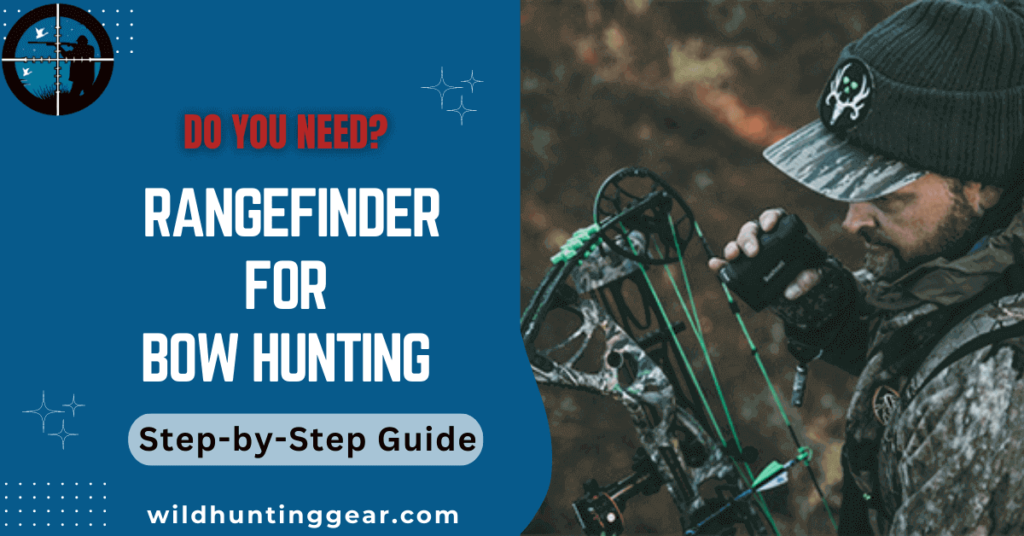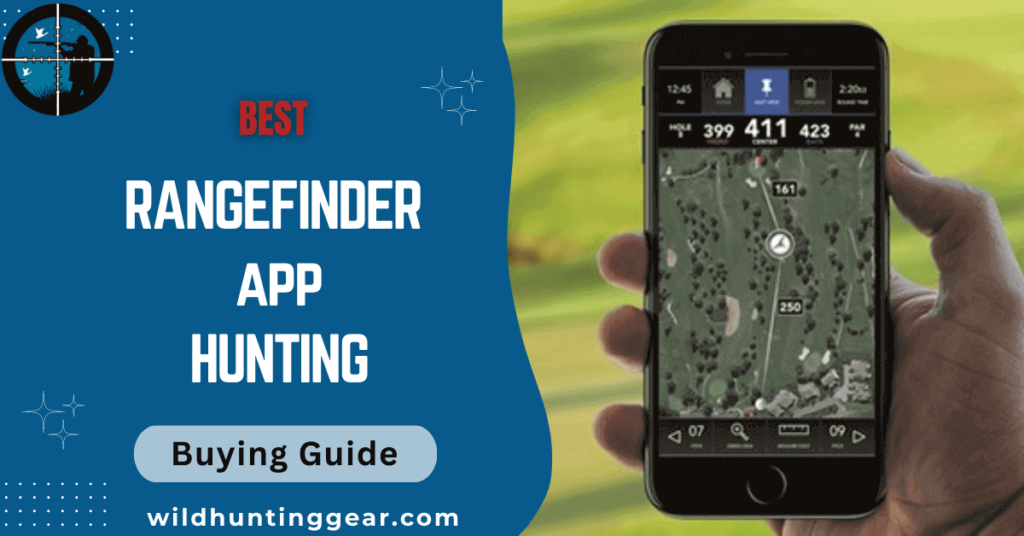Bow hunting is an ancient and challenging activity that requires skill and precision. To be successful, hunters need to carefully choose their bow and arrows and they must practice their shooting technique.
Nowadays, a tool called a rangefinder has become popular among bow hunters. But the big question is: Do you really need a rangefinder for bow hunting?
In this blog post, we will discuss why a rangefinder is important for bow hunting and what things to consider when using a rangefinder while bow hunting. We’ll also explore the benefits and drawbacks of using a rangefinder in bow hunting, so that you have an informed decision about whether you should use one or not. Read on to find more.
Do you need a rangefinder for bow hunting?

While a rangefinder is not an absolute requirement for bow hunting, many bow hunters find it beneficial to have one. A rangefinder can help you accurately determine the distance between yourself and your target, which is crucial for making an effective shot with a bow. Knowing the exact distance allows you to adjust your aim and choose the appropriate pin or sight setting on your bow.
Bow hunters often encounter situations where judging distance accurately becomes challenging, such as when shooting from elevated positions or in varying terrain. In such cases, a rangefinder can be extremely helpful in ensuring you make an ethical and precise shot.
However, some experienced bow hunters rely on their ability to estimate distances without using a rangefinder. They develop a keen sense of judging distances through practice and familiarity with their equipment.
Ultimately, whether or not you choose to use a rangefinder for bow hunting is a personal preference but it can be a valuable tool for improving your accuracy and success in the field.
Importance of range estimation in bow hunting.
Range estimation is a critical skill in bow hunting because it directly affects the accuracy and effectiveness of your shot. When you accurately estimate the distance to your target, you can make the necessary adjustments to your aim, ensuring that your arrow hits the target with precision.
Range estimation is crucial in bow hunting for several reasons:
- Accuracy: Accurately estimating the distance to your target allows for precise shot placement, increasing the chances of a successful kill.
- Adjusting for trajectory: Bow arrows follow a curved path, so knowing the distance helps you adjust your aim to compensate for the arrow’s trajectory.
- Avoiding over or undershooting: Misjudging the range can result in shooting too high or too low, potentially leading to missed shots or non-lethal hits.
- Equipment adjustments: Accurate range estimation enables you to select the appropriate bow sight pin or make necessary adjustments to your equipment for optimal shot placement.
- Ethical hunting: Ethical hunters prioritize clean and humane kills. Estimating range ensures clear shots within your effective range, reducing the risk of wounding or injuring the animal unnecessarily.
To improve range estimation, practice using rangefinders, familiarize yourself with landmarks or objects of known distances and learn to judge distances based on animal behavior or size. Developing this skill enhances your chances of success in bow hunting.
Benefits of Using a Rangefinder for Bow Hunting

Using a rangefinder offers several benefits that make it an attractive option for bow hunting. Here are some of the advantages you can expect with this tool:
1) Increased accuracy: A rangefinder enables you to accurately determine the distance between you and your target. This knowledge allows you to make more precise and effective shots, ensuring you have a higher chance of hitting your target successfully. With accurate range estimation, you can adjust your aim and compensate for distance, improving your overall shooting accuracy.
2) Better shot placement: Knowing the exact distance to your target helps you make more informed decisions about shot placement. By understanding the distance, you can aim for specific vital areas on the animal, such as the heart or lungs, which leads to quicker, cleaner kills. This reduces the chances of injuring the animal and increases the chances of a successful harvest.
3) Increased confidence: Rangefinders instill confidence in bow hunters by providing them with reliable information about the target’s distance. When you have confidence in your equipment and knowledge, it can significantly reduce anxiety and improve your overall shooting performance.
4) Time efficiency: Rangefinders save time by eliminating the need to estimate distances manually. Instead of spending valuable seconds or minutes trying to judge the range, you can quickly and accurately determine the distance with a rangefinder. This efficiency can be crucial in situations where you need to make a fast shot or when you have limited time to prepare for a shot opportunity.
5) Versatility: Rangefinders are often equipped with additional features, such as angle compensation, which adjusts the distance measurement based on the angle of the shot. This compensates for the effects of shooting uphill or downhill, providing a more accurate distance reading and allowing you to make the necessary adjustments for a successful shot.
6) Long-range shooting: For bow hunters who engage in long-range shooting, a rangefinder becomes even more valuable. It enables you to accurately measure longer distances, giving you the confidence to take shots at greater ranges while maintaining the accuracy and ethical considerations required for a clean kill.
Overall, using a rangefinder for bow hunting offers increased accuracy and shot placement, confidence, time efficiency, versatility and the ability to engage in long-range shooting. These benefits can significantly enhance your hunting success and overall experience in the field.
Consideration when using a rangefinder for bow hunting
When using a rangefinder for bow hunting, there are several important considerations to keep in mind to ensure accurate and effective shots. Here are some key factors to consider:
- Range accuracy: Choose a rangefinder that provides precise distance measurements. Accuracy is crucial for bow hunting, as even a slight miscalculation can result in missed shots or wounded animals.
- Angle compensation: Look for a rangefinder with angle compensation technology. When shooting at an elevated or downhill angle, the true horizontal distance to the target is different from the line-of-sight distance. Angle compensation adjusts for this difference, helping you make more accurate shots.
- Target priority: Opt for a rangefinder that offers target priority or target separation modes. These features help distinguish the desired target from potential obstructions such as branches or foliage, ensuring you measure the distance to your intended target accurately.
- Ease of use: Choose a rangefinder that is user-friendly and easy to operate, especially when you may need to quickly range a target in the field. Consider factors such as button layout, display clarity and overall ergonomics for a seamless experience.
- Size and weight: Pay attention to the size and weight of the rangefinder, as you’ll likely be carrying it with you during hunts. A compact and lightweight rangefinder will be more convenient and less cumbersome to handle while in the field.
- Durability and weather resistance: Ensure that the rangefinder is built to withstand the rigors of hunting, including exposure to various weather conditions. Look for models that are water-resistant or waterproof, fog-resistant and shock-resistant, as they will be better equipped to handle adverse conditions.
- Battery life: Consider the battery life of the rangefinder, as you don’t want it to die in the middle of a hunt. Look for models with long battery life or those that offer additional power-saving features, such as an auto-shutoff function.
- Optics quality: Evaluate the optics quality of the rangefinder, including the clarity and brightness of the image produced. A rangefinder with high-quality optics will enhance your ability to spot and range targets accurately, especially in low-light conditions.
- Range capability: Consider the maximum range capability of the rangefinder. While a longer range may seem advantageous, keep in mind that ranging targets beyond your effective shooting range may not be useful and could lead to unnecessary distractions.
How to use a rangefinder for bow hunting?
Using a rangefinder for bow hunting can greatly enhance your accuracy by helping you determine the distance to your target.
Here’s a step-by-step guide on how to use a rangefinder effectively for bow hunting:
1) Familiarize yourself with the rangefinder: Before using your rangefinder, make sure you understand how it works and what features it offers. This will help you get the most out of it when you’re in the field.
2) Set up the rangefinder: Ensure that your rangefinder is properly set up and calibrated before heading out for your hunting trip. Follow the manufacturer’s instructions to ensure accurate distance measurements.
3) Locate your target: Use your binoculars or scan the area to locate your target. Identify a specific spot on the animal, such as the shoulder or vital area, to measure the distance accurately.
4) Prepare for ranging: Steady your bow and get into a comfortable shooting position. Make sure you have a clear line of sight to the target without any obstructions. If necessary, clear away any brush or branches that may interfere with your shot.
5) Activate the rangefinder: Hold the rangefinder steadily with both hands and activate it. Align the crosshairs or reticle of the rangefinder with the target. Some rangefinders may require you to press and hold a button while others may provide continuous measurement as long as you keep the target in sight.
6) Take the reading: Once you have the target in sight, press the range button or wait for the rangefinder to display the distance measurement. Take note of the reading provided.
7) Adjust your shot: After obtaining the distance measurement, you can adjust your shot accordingly. Use your knowledge of your bow’s trajectory and your personal shooting ability to compensate for the distance. This may involve adjusting your sight pins or holding higher or lower on the target, depending on the distance.
8) Practice and verify: Use your rangefinder in different scenarios during practice sessions to develop a feel for how distance affects your shot. Verify your rangefinder’s accuracy by measuring distances of known objects or markers to ensure it provides consistent and reliable readings.
Regular practice and experience will help you become more proficient in estimating distances and making accurate shots while bow hunting.
Alternative methods for distance estimation in bow hunting.
While rangefinders can be a great tool for bow hunting, there are also other methods you can use to estimate distances. Here are some alternatives:
- Visual estimation: Learn to estimate distances visually by using your hands, equipment or other objects as measuring tools. For example, one hand held at arm’s length is roughly equal to 18 inches, while a full arm stretch is approximately 3 feet. You can also use the size of your bow or draw length to estimate distance.
- Pace counting: This method involves counting the number of steps taken while walking from one point to another and using that information to estimate the distance between them. Be sure to factor in terrain changes when pacing off distances as they can affect the accuracy of this method.
- Using marks: Before heading out for a hunt, mark distances on trees or other stationary objects in the field. This will allow you to quickly estimate the distance to a given target by simply counting the marks.
- Using an arrow: If you’re bow hunting with a companion, have them shoot an arrow into the ground at regular intervals and use this as a reference point when estimating distances.
Remember, while alternative methods can be helpful, they are not as precise as using a rangefinder. Therefore, it’s always recommended to carry a reliable rangefinder for accurate distance measurement whenever possible.
Final Words:
In conclusion, while a rangefinder can be a useful tool for bow hunting, it is not an absolute necessity. The decision to use a rangefinder ultimately depends on individual preferences, hunting conditions and skill level.
Rangefinders can assist in accurately determining the distance to a target, which can improve shot placement and increase the chances of a successful hunt.
However, skilled hunters can develop a keen sense of estimating distances through practice and experience, making a rangefinder less essential. Beginners and those hunting in open areas with longer shots may benefit from a rangefinder.
Ultimately, bow hunters should assess their own abilities, hunting environment and budget to determine if investing in a rangefinder aligns with their specific needs and hunting style.




